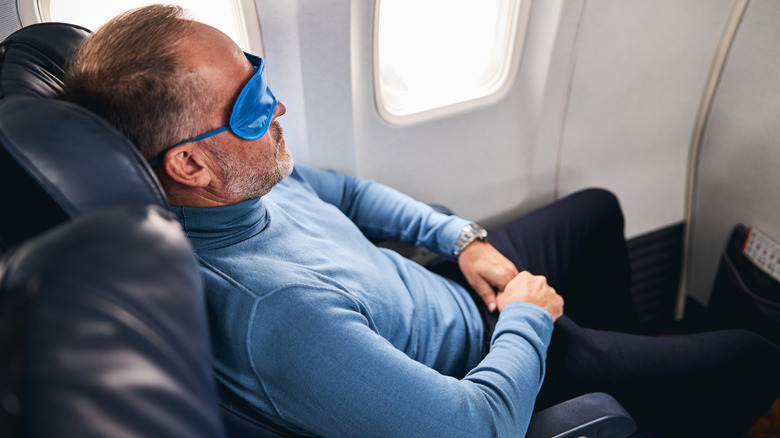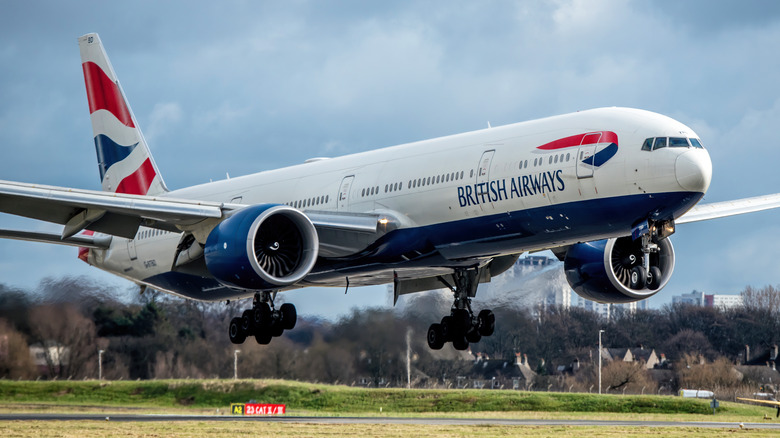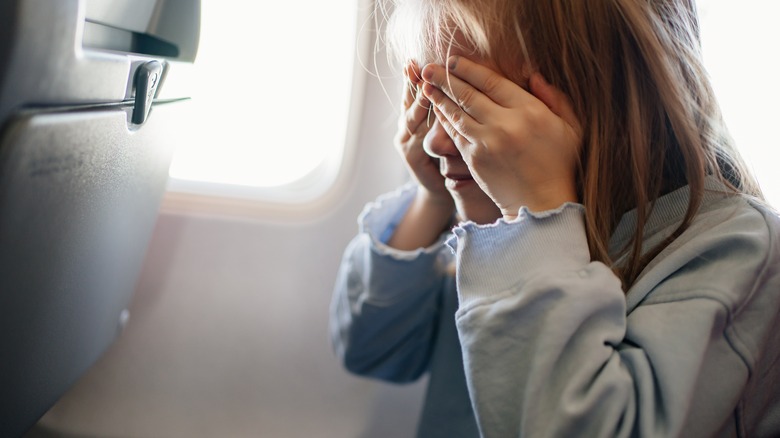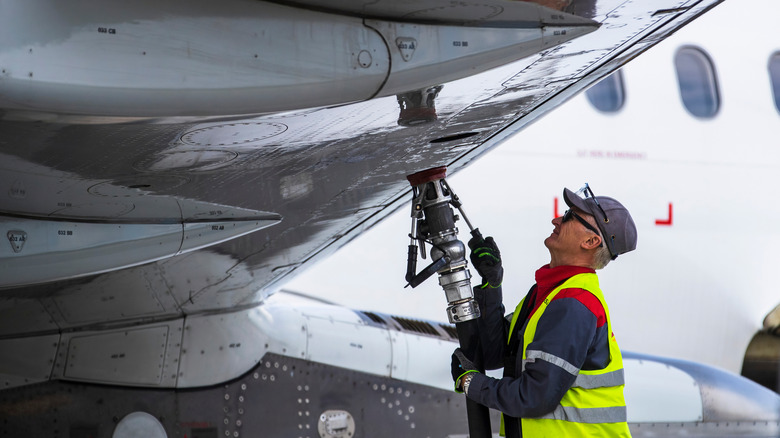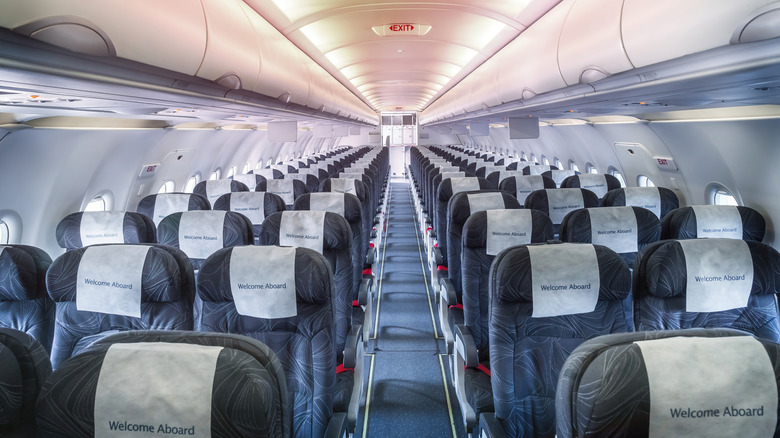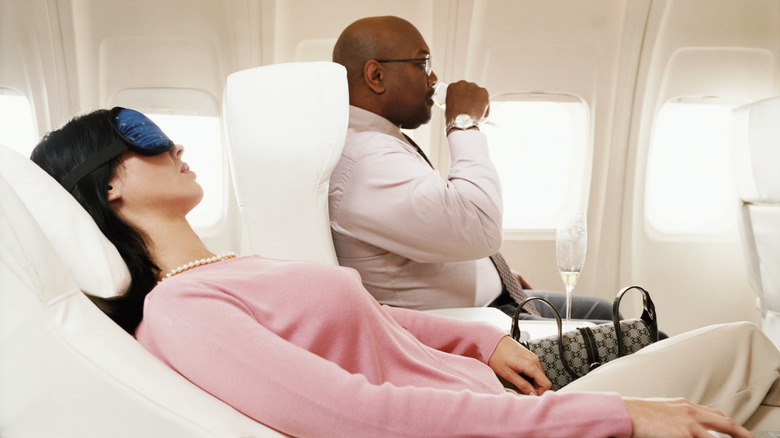Why Reclining Seats Are Becoming A Thing Of The Past On Airlines
Back in 2018, the Federal Aviation Association decided that they wouldn't regulate the specs of airline seats. By making that decision, the FAA handed over the design, layout, and general aesthetics of in-cabin seating decisions to the airlines. So every time airlines decide to cram more seats into their aircraft, nothing can be done about it.
Plane seats have gotten several inches smaller since the 1970s, it isn't your imagination. Losing those precious inches of space between, in front of, or around seats means less comfort for economy passengers regardless of their length of flights. Part of that seating trend is now becoming centered around seat reclining. There are a few logistical reasons why airlines are moving away from reclining seats, though most of them are because of economic reasons. Here's a look at how the aviation industry is moving forward and why those reclining seats are disappearing from several planes.
Which airlines are getting rid of reclining seats
Planes with seats that don't recline already exist. While some are extreme budget airlines like Spirit or Allegiant, others are international carriers like Finnair. Finnair's newest planes don't have reclining seats in their business class, which may come as a surprise for frequent fliers. However, the lack of reclining seats allows the planes to make better use of their space regardless of flight class.
Finnair's plush non-reclining pod seats not only make better use of the cabin space but also give passengers more privacy. So it's really a matter of what perks you want as a traveler and what you're willing to give up in exchange for non-reclining seats.
British Airways, for example, released 35 new Airbus A320neos and A321neos in 2018 that didn't have reclining seats. Instead, their new Airbus models have pre-reclined seats instead. The airline's stance on the subject was that passengers would be willing to pay less for airfare even with the mild inconvenience of not being able to recline for flights of less than four hours.
Maintenance costs
Reclining seats require frequent mechanical maintenance, which costs the airlines quite a bit of money. The mechanisms under the plane seats that allow them to recline can be easily broken if only one element of the mechanisms stop working so the maintenance required is both frequent and costly.
These reclining mechanisms are fragile, so they're prone to breaking on a regular basis. However, they also break more often because of how rough some passengers treat the plane seats. Without seats that recline, airlines have one less thing to routinely fix or refurbish aboard their planes.
Allegiant, the first budget carrier that eliminated reclining seats in 2006, estimates that they save roughly $3.5 million a year in maintenance costs without them. That amount seems like a drop in the bucket for a company valued over $1 billion, but it doesn't take into account having to replace the systems altogether, costs associated with diverting passengers to working seats, or delayed processes to fix the seats.
Avoiding fights among passengers
One of the biggest issues with reclining seats in an airplane is the fact that passengers can end up disrupting the flight. Passengers get into fights with one another over reclining seat disputes — termed "Recline Rage" — which can mean turning a flight around or delaying take-off so the passengers can be escorted off by authorities.
Stories of unruly passengers may be infrequent in the media, however, the occurrence of unruly passenger investigations has been on the rise for a few years now. In 2013 the Federal Aviation Administration only had 149 unruly passenger investigations. Only nine years later, that number jumped to a whopping 1099 in 2021 and 831 in 2022.
Those investigations point to a range of unruly passenger issues with recline rage as just one of the many potential causes. Plus those investigations also do not account for all reports made by the airlines or situations that weren't reported. In 2022, the FAA reported upwards of $8,449,543 in fines for unruly passengers with 2,456 unruly passenger reports filed.
Plane fuel usage
One of the reasons carriers like Allegiant or Spirit can offer such low airfares is because of how bare-bones their cabins are. Plus, their customers go into their flights knowing that the cabins won't have all the bells and whistles of more traditional carriers like American Airlines or United.
Budget airlines generally don't have reclining seats. And without the ability to recline seats, the plane weighs a lot less. All of those mechanisms add several pounds to each seat. When a plane weighs less, it uses less fuel and therefore costs less for the airline to operate. Plus, the airline will be able to fit more people in the plane if it's lighter to begin with.
Allegiant estimated in 2014 that, without reclining seats, they save around 110,000 gallons of fuel or $350,000 worth of gasoline each year. With inflation, that would be over $430,000 worth of fuel today. As airlines continue to consider eliminating reclining seats from their cabins and fuel costs continue to rise, using less fuel is likely to be a big consideration.
Save space on the plane
Airlines are always looking for a way to save space on their planes to fit more passengers on board. One of the ways they can do that is by eliminating reclining seats. Seating configurations can also be changed to fit more seats onboard if the seats don't recline. Seat shapes on airplanes overall are changing to allow for comfort and economical use of space.
Regardless of the reasoning, airlines have more ability than ever to change how they configure their plane cabins. Part of that may mean revolutionizing seat designs in general. Whether they're opting for pre-recline seats or creating passenger shells that give fliers more privacy and room to stretch out, the possibilities are endless.
That flexibility of aircraft configurations is one of the reasons pre-reclined rather than recline-capable seats are becoming more popular in the airline industry. Seats that can't move back give all passengers in a given cabin a guaranteed amount of space, no matter what their fellow passengers do from their own seats. This way, ideally, everyone is a little happier in the sky.
A lot of passengers don't recline their seats anyway
Whether or not you can or should recline your seat on an airplane when someone is seated behind you is a hotly debated issue online. There are forums dedicated to teaching passengers how to lock their fellow fliers' seats in place so they can't recline or point their air vents in the seat recliner's direction to make them cold as a petty means of revenge. Clearly, everyone has opinions one way or another about whether it's your right to recline your seat. To steer clear of trouble, many passengers just avoid the issue by foregoing the option altogether.
A lot of passengers will also let the flight time dictate whether or not they recline their seats. So many airline passengers have had their flights ruined by bad reclining behavior that they just don't like using the reclining function at all. From having meals thrown around or personal items damaged while using the tray table because of rapid seat reclining, we all have our reasons to recline or not to recline while in the air.
